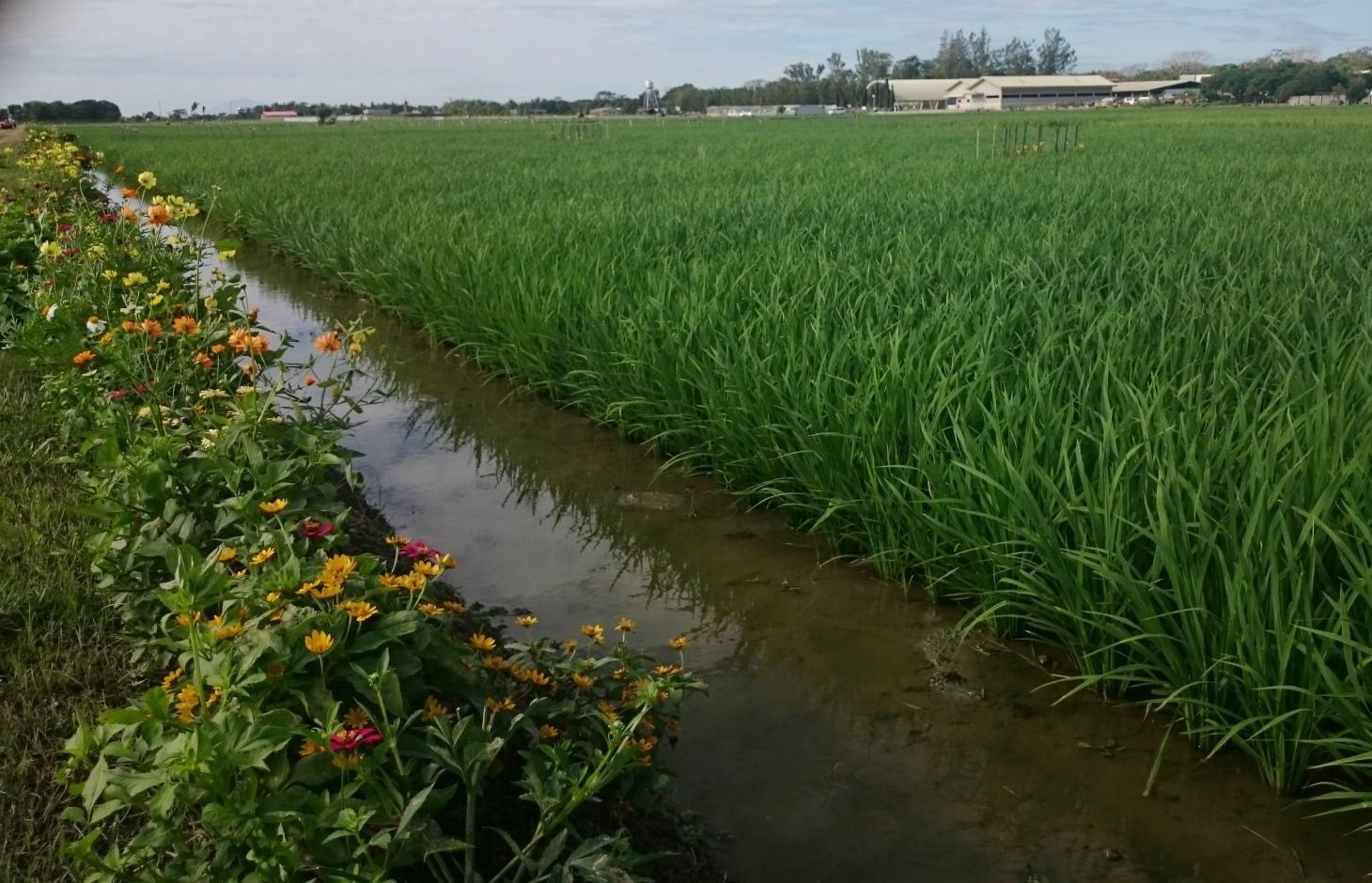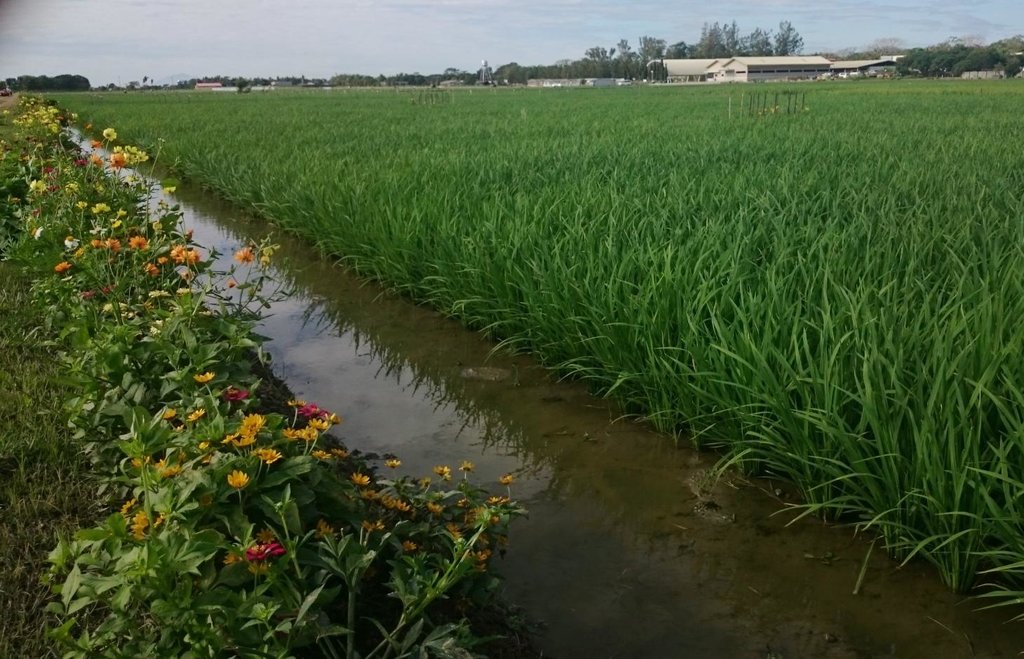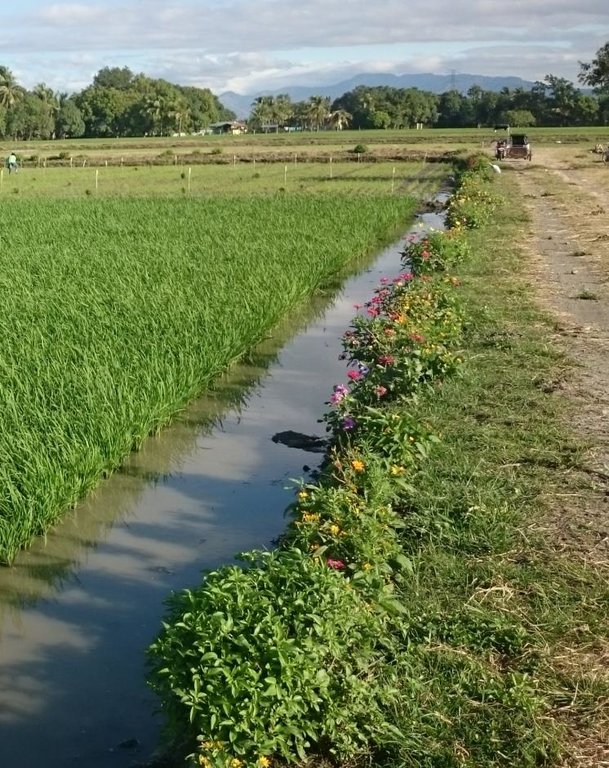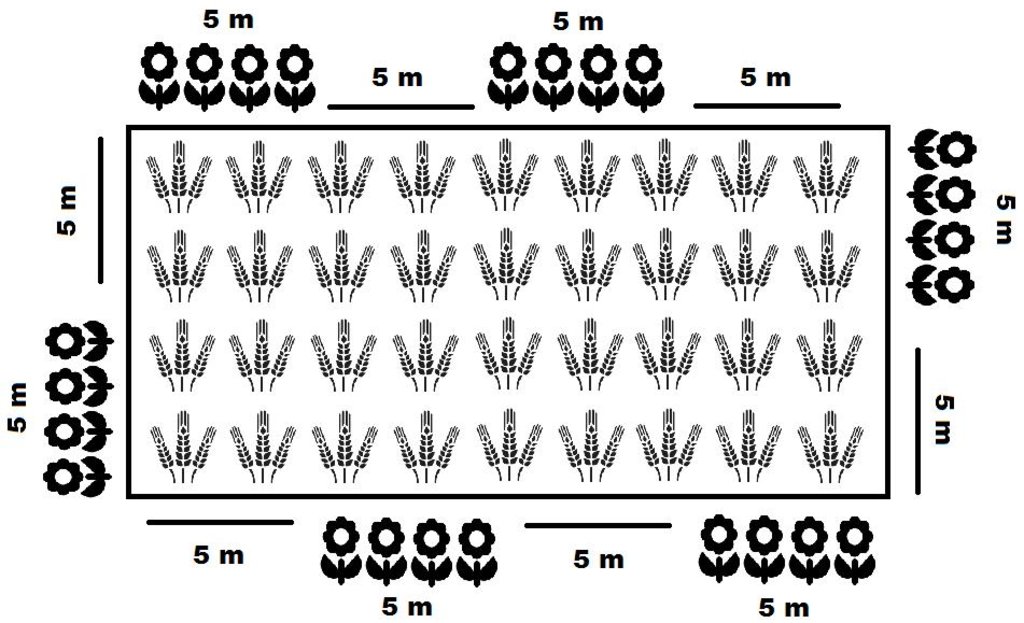Ecological engineering for biological pest control in lowland rice agroecosystems [菲律宾]
- 创建:
- 更新:
- 编制者: Martin Wiemers
- 编辑者: –
- 审查者: David Streiff, Deborah Niggli, Alexandra Gavilano
technologies_1720 - 菲律宾
- Ecological engineering for biological pest control in lowland rice agroecosystems: March 3, 2017 (inactive)
- Ecological engineering for biological pest control in lowland rice agroecosystems: April 4, 2018 (inactive)
- Ecological engineering for biological pest control in lowland rice agroecosystems: June 13, 2019 (public)
查看章节
全部展开 全部收起1. 一般信息
1.2 参与该技术评估和文件编制的资源人员和机构的联系方式
SLM专业人员:
Vetterlein Doris
Helmholtz Centre for Environmental Research - UFZ
德国
SLM专业人员:
Settele Josef
Helmholtz Centre for Environmental Research - UFZ
德国
有助于对技术进行记录/评估的项目名称(如相关)
Book project: Making sense of research for sustainable land management (GLUES)有助于对技术进行记录/评估的机构名称(如相关)
Helmholtz Centre for Environmental Research (UFZ) - 德国有助于对技术进行记录/评估的机构名称(如相关)
Rice ecosystem services (LEGATO) - 菲律宾有助于对技术进行记录/评估的机构名称(如相关)
Philippine Rice Research Institute (PhilRice) - 菲律宾1.3 关于使用通过WOCAT记录的数据的条件
编制者和关键资源人员接受有关使用通过WOCAT记录数据的条件。:
是
2. SLM技术的说明
2.1 技术简介
技术定义:
Ecological engineering in lowland rice agroecosystems by planting of flower strips in rice fields as habitats for beneficial arthropods which control pests.
2.2 技术的详细说明
说明:
To counteract the negative impact of agricultural intensification, in particular the loss of biodiversity and ecosystem services, more sustainable management for crop land and surrounding habitats is required. ‘Ecological engineering’, in this case meaning the provision of habitats for beneficial arthropods, has recently gained considerable attention as a method of reducing pesticide input, through stimulating biological pest control by natural enemies.
Purpose of the Technology: The concept of ecological engineering is aimed primarily at the regulation of pest species, through the provision of habitats for their natural enemies. However, other ecosystem services, such as pollination and cultural services, may simultaneously be enhanced by using the same measures. One such measure, which is popular and effective in temperate countries where agro-environmental schemes are implemented, is the planting of flower strips as habitats.
In intensively managed tropical rice production systems, biological pest control, pollination services and landscape aesthetics could also benefit from the establishment of flower strips on the bunds within irrigated fields. The specific aim of the technology featured here is to increase biodiversity in rice fields and provide habitats for beneficial organisms such as predators of rice pests (e.g. spiders) or parasitoids (e.g. hymenopteran parasites), which in turn will help to minimize the use of pesticides. An additional benefit is landscape beautification.
Establishment / maintenance activities and inputs: The process comprises collecting seeds of flowering plants (e.g. flowering annuals such as Melampodium divaricatum) and planting them in a nursery. After a month or so they can be transplanted into rice fields on bunds, with a strip size of 0.25 x 5 metres, and a distance between strips of 5 metres (to enable access for farm operations such as fertilizer application). Farmers are requested not to spray insecticides when they test this system. The flowering plants should be pruned during the fallow period in the wet season; and they will require watering during the dry season when rice is cropped. The flower strips will need to be replanted after the rice crop is harvested, if an annual species are chosen.
Natural / human environment: While this SLM technology is for an irrigated rice ecosystem in the center of the island of Luzon in the Philippines, it has already been applied in other rice producing areas – for example in Vietnam and, with some adaptations, should be applicable to irrigated lowland rice production systems throughout Southeast Asia.
2.3 技术照片
2.5 已应用该技术的、本评估所涵盖的国家/地区/地点
国家:
菲律宾
区域/州/省:
Nueva Ecija
有关地点的进一步说明:
Muñoz
具体说明该技术的分布:
- 均匀地分布在一个区域
如果不知道精确的区域,请注明大致覆盖的区域:
- < 0.1 平方千米(10 公顷)
Map
×2.6 实施日期
如果不知道确切的年份,请说明大概的日期:
- 不到10年前(最近)
2.7 技术介绍
详细说明该技术是如何引入的:
- 在实验/研究期间
3. SLM技术的分类
3.2 应用该技术的当前土地利用类型

农田
- 一年一作
年作 - 具体指明作物:
- 蔬菜 - 其他
- rice
每年的生长季节数:
- 2
具体说明:
Longest growing period in days: 120Longest growing period from month to month: January to AprilSecond longest growing period in days: 120Second longest growing period from month to month: June to September
注释:
Major cash crop: vegetables
Major food crop: rice
Major land use problems (compiler’s opinion): pest outbreaks; low population of natural enemies; loss of biodiversity and health hazards to farmers. High levels of pesticide use leading to insect resistance. Complete loss of forest leading to degraded watersheds and sedimentation of dams, soil erosion, and temperatures rising as a result of climate change. Intensive agriculture causing degraded soil conditions and compromising the sustainability of productive lands. Intensive agriculture also means increased use of water resources, more chemical inputs and more pest pressure.
Major land use problems (land users’ perception): Pest problems
Type of cropping system and major crops comments: vegetables are planted between rice cropping seasons
3.4 供水
该技术所应用土地的供水:
- 充分灌溉
3.5 该技术所属的SLM组
- 病虫害综合管理(包括有机农业)
3.6 包含该技术的可持续土地管理措施

植物措施
- V5:其它
注释:
Main measures: vegetative measures
Specification of other vegetative measures: Annual flower strips
Type of vegetative measures: aligned: -along boundary
3.7 该技术强调的主要土地退化类型

生物性退化
- Bs:质量和物种组成/多样性的下降
- Bp:害虫/疾病增加,捕食者减少
注释:
Main type of degradation addressed: Bp: increase of pests / diseases, loss of predators
Secondary types of degradation addressed: Bs: quality and species composition /diversity decline
Main causes of degradation: deforestation / removal of natural vegetation (incl. forest fires) (Complete deforestation), population pressure (Growing population)
Secondary causes of degradation: crop management (annual, perennial, tree/shrub) (intensive lowland rice production)
3.8 防止、减少或恢复土地退化
具体数量名该技术与土地退化有关的目标:
- 防止土地退化
- 减少土地退化
注释:
Main goals: prevention of land degradation
Secondary goals: mitigation / reduction of land degradation
4. 技术规范、实施活动、投入和成本
4.1 该技术的技术图纸
技术规范(与技术图纸相关):
Flowering plants planted around rice field (e.g. annuals such as Melampodium divaricatum)
Location: Maligaya. Muñoz, Nueva Ecija, Philippines
Date: 14 March 2016
Technical knowledge required for field staff / advisors: low
Technical knowledge required for land users: low
Main technical functions: Biological pest control reduces pollution by agro-chemicals
Secondary technical functions: promotion of vegetation species and varieties (quality, eg palatable fodder), spatial arrangement and diversification of land use
Aligned: -along boundary
Vegetative material: O : other
Number of plants per (ha): 800
Spacing between rows / strips / blocks (m): 5
Vertical interval within rows / strips / blocks (m): 5
Other species: annual flowers, e.g. Melampodium divaricatum
作者:
Martin Wiemers, Philrice, Nueva Ecija, Philippines
4.2 有关投入和成本计算的一般信息
具体说明成本计算所用货币:
- 美元
注明雇用劳工的每日平均工资成本:
7
4.3 技术建立活动
| 活动 | 时间(季度) | |
|---|---|---|
| 1. | Flowering plant seed collection | Fallow period |
| 2. | Flowering plant nursery establishment | Fallow period |
| 3. | Transplanting flowering plants | vegetative stage of rice |
4.4 技术建立所需要的费用和投入
| 对投入进行具体说明 | 单位 | 数量 | 单位成本 | 每项投入的总成本 | 土地使用者承担的成本% | |
|---|---|---|---|---|---|---|
| 劳动力 | Flowering plant/ nursery / transplanting | Person/day | 13.0 | 7.0 | 91.0 | |
| 劳动力 | Trasnportation | - | 1.0 | 41.5 | 41.5 | |
| 设备 | plastic bags / plot | - | 1.0 | 19.0 | 19.0 | |
| 肥料和杀菌剂 | Compost | kg | 250.0 | 0.12 | 30.0 | |
| 肥料和杀菌剂 | Fertilizer | kg | 4.0 | 1.0 | 4.0 | |
| 技术建立所需总成本 | 185.5 | |||||
| 技术建立总成本,美元 | 185.5 | |||||
如果土地使用者负担的费用少于100%,请注明由谁负担其余费用:
NA
注释:
Duration of establishment phase: 1 month(s)
4.5 维护/经常性活动
| 活动 | 时间/频率 | |
|---|---|---|
| 1. | Flowering plant maintenance, i.e. trimming, removal of volunteer seedlings out of the strips and thinning during cropping season. Watering and replacement in times of long drought fallow period | rice cropping season |
4.6 维护/经常性活动所需要的费用和投入(每年)
| 对投入进行具体说明 | 单位 | 数量 | 单位成本 | 每项投入的总成本 | 土地使用者承担的成本% | |
|---|---|---|---|---|---|---|
| 劳动力 | Flowering plant maintenance | Person/day | 10.0 | 4.0 | 40.0 | |
| 技术维护所需总成本 | 40.0 | |||||
| 技术维护总成本,美元 | 40.0 | |||||
如果土地使用者负担的费用少于100%,请注明由谁负担其余费用:
NA
4.7 影响成本的最重要因素
描述影响成本的最决定性因素:
Costs are given for the first year of testing. If flower strips with annual flowering plants will be planted recurrently, then ‘establishment’ costs will be the same each year.
5. 自然和人文环境
5.1 气候
年降雨量
- < 250毫米
- 251-500毫米
- 501-750毫米
- 751-1,000毫米
- 1,001-1,500毫米
- 1,501-2,000毫米
- 2,001-3,000毫米
- 3,001-4,000毫米
- > 4,000毫米
有关降雨的规范/注释:
rainy season May - November; dry season January - April
农业气候带
- 潮湿的
Thermal climate class: tropics
5.2 地形
平均坡度:
- 水平(0-2%)
- 缓降(3-5%)
- 平缓(6-10%)
- 滚坡(11-15%)
- 崎岖(16-30%)
- 陡峭(31-60%)
- 非常陡峭(>60%)
地形:
- 高原/平原
- 山脊
- 山坡
- 山地斜坡
- 麓坡
- 谷底
垂直分布带:
- 0-100 m a.s.l.
- 101-500 m a.s.l.
- 501-1,000 m a.s.l.
- 1,001-1,500 m a.s.l.
- 1,501-2,000 m a.s.l.
- 2,001-2,500 m a.s.l.
- 2,501-3,000 m a.s.l.
- 3,001-4,000 m a.s.l.
- > 4,000 m a.s.l.
说明该技术是否专门应用于:
- 不相关
5.3 土壤
平均土层深度:
- 非常浅(0-20厘米)
- 浅(21-50厘米)
- 中等深度(51-80厘米)
- 深(81-120厘米)
- 非常深(> 120厘米)
土壤质地(表土):
- 细粒/重质(粘土)
表土有机质:
- 低(<1%)
如有可能,附上完整的土壤描述或具体说明可用的信息,例如土壤类型、土壤酸碱度、阳离子交换能力、氮、盐度等。:
Soil depth: plow layer of paddy soil
5.4 水资源可用性和质量
地下水位表:
< 5米
地表水的可用性:
好
水质(未处理):
仅供农业使用(灌溉)
5.5 生物多样性
物种多样性:
- 低
5.6 应用该技术的土地使用者的特征
生产系统的市场定位:
- 混合(生计/商业)
非农收入:
- > 收入的50%
相对财富水平:
- 贫瘠
- 平均水平
个人或集体:
- 团体/社区
机械化水平:
- 手工作业
- 机械化/电动
性别:
- 女人
- 男人
说明土地使用者的其他有关特征:
Land users applying the Technology are mainly common / average land users
Population density: 200-500 persons/km2
Annual population growth: 1% - 2%
10% of the land users are rich and own 30% of the land.
70% of the land users are average wealthy and own 50% of the land.
20% of the land users are poor and own 20% of the land.
Off-farm income specification: Farming
Manual labour: Transplanting, fertilizer application, pesticide application and other maintenance activities
Mechanised: land preparation and harvesting
5.7 应用该技术的土地使用者使用的平均土地面积
- < 0.5 公顷
- 0.5-1 公顷
- 1-2 公顷
- 2-5公顷
- 5-15公顷
- 15-50公顷
- 50-100公顷
- 100-500公顷
- 500-1,000公顷
- 1,000-10,000公顷
- > 10,000公顷
这被认为是小规模、中规模还是大规模的(参照当地实际情况)?:
- 小规模的
5.8 土地所有权、土地使用权和水使用权
土地所有权:
- 个人,有命名
土地使用权:
- 个人
用水权:
- 社区(有组织)
5.9 进入服务和基础设施的通道
健康:
- 贫瘠
- 适度的
- 好
教育:
- 贫瘠
- 适度的
- 好
技术援助:
- 贫瘠
- 适度的
- 好
就业(例如非农):
- 贫瘠
- 适度的
- 好
市场:
- 贫瘠
- 适度的
- 好
能源:
- 贫瘠
- 适度的
- 好
道路和交通:
- 贫瘠
- 适度的
- 好
饮用水和卫生设施:
- 贫瘠
- 适度的
- 好
金融服务:
- 贫瘠
- 适度的
- 好
6. 影响和结论性说明
6.1 该技术的现场影响
社会经济效应
生产
作物生产
土地管理
水资源可用性和质量
灌溉用水需求
收入和成本
农业投入费用
工作量
注释/具体说明:
About 0 since labour constrains increased and workload decreased
社会文化影响
健康状况
娱乐机会
Improved livelihoods and human well-being
生态影响
水循环/径流
水质
蒸发
土壤
土壤水分
生物多样性:植被、动物
生物量/地上C
植物多样性
动物多样性
有益物种
栖息地多样性
害虫/疾病控制
6.3 技术对渐变气候以及与气候相关的极端情况/灾害的暴露和敏感性(土地使用者认为的极端情况/灾害)
气候有关的极端情况(灾害)
气象灾害
| 该技术是如何应对的? | |
|---|---|
| 局地暴雨 | 好 |
气候灾害
| 该技术是如何应对的? | |
|---|---|
| 干旱 | 不好 |
水文灾害
| 该技术是如何应对的? | |
|---|---|
| 比较和缓的(河道)洪水 | 不好 |
6.4 成本效益分析
技术收益与技术建立成本相比如何(从土地使用者的角度看)?
短期回报:
积极
长期回报:
非常积极
技术收益与技术维护成本/经常性成本相比如何(从土地使用者的角度看)?
短期回报:
稍微积极
长期回报:
积极
6.5 技术采用
- > 50%
如若可行,进行量化(住户数量和/或覆盖面积):
70 familes (90 percent of the area)
在所有采用这项技术的人当中,有多少人是自发的,即未获得任何物质奖励/付款?:
- 11-50%
注释:
90% of land user families have adopted the Technology with external material support
70 land user families have adopted the Technology with external material support
10% of land user families have adopted the Technology without any external material support
20 land user families have adopted the Technology without any external material support
There is a moderate trend towards spontaneous adoption of the Technology
Comments on adoption trend: adaptation for now is mainly by the project farmer cooperators and technicians (for demonstration)
6.7 该技术的优点/长处/机会
| 土地使用者眼中的长处/优势/机会 |
|---|
|
Farmers save money by reducing pesticide use How can they be sustained / enhanced? Present research study results to farmers |
|
Ceasing or reducing pesticide use improves farmers' health How can they be sustained / enhanced? Educate farmers in the harmful effects of pesticide use |
| 编制者或其他关键资源人员认为的长处/优势/机会 |
|---|
|
Enhances biodiversity in rice ecosystem How can they be sustained / enhanced? Continue demonstration |
6.8 技术的弱点/缺点/风险及其克服方法
| 土地使用者认为的弱点/缺点/风险 | 如何克服它们? |
|---|---|
| Additional work for farmers | Incorporate activities in traditional rice growing activities |
| To achieve maximum impact, neighboring farmers and fields should also reduce the use of pesticides and agro-chemicals | A management plan for the whole area needs to be developed |
| 编制者或其他关键资源人员认为的弱点/缺点/风险 | 如何克服它们? |
|---|---|
| Does not solve all problems with pests, i.e. pest outbreaks are still possible | Develop integrated pest management, e.g. use pesticides only in emergencies, and/or develop an insurance system for farmers. |
7. 参考和链接
7.1 信息的方法/来源
7.2 参考可用出版物
标题、作者、年份、ISBN:
Westphal, C. et al. (2015) Promoting multiple ecosystem services with flower strips and participatory approaches in rice production landscapes
可以从哪里获得?成本如何?
http://dx.doi.org/doi:10.1016/j.baae.2015.10.004
标题、作者、年份、ISBN:
LEGATO website
可以从哪里获得?成本如何?
http://legato-project.net/
链接和模块
全部展开 全部收起链接
无链接
模块
无模块






